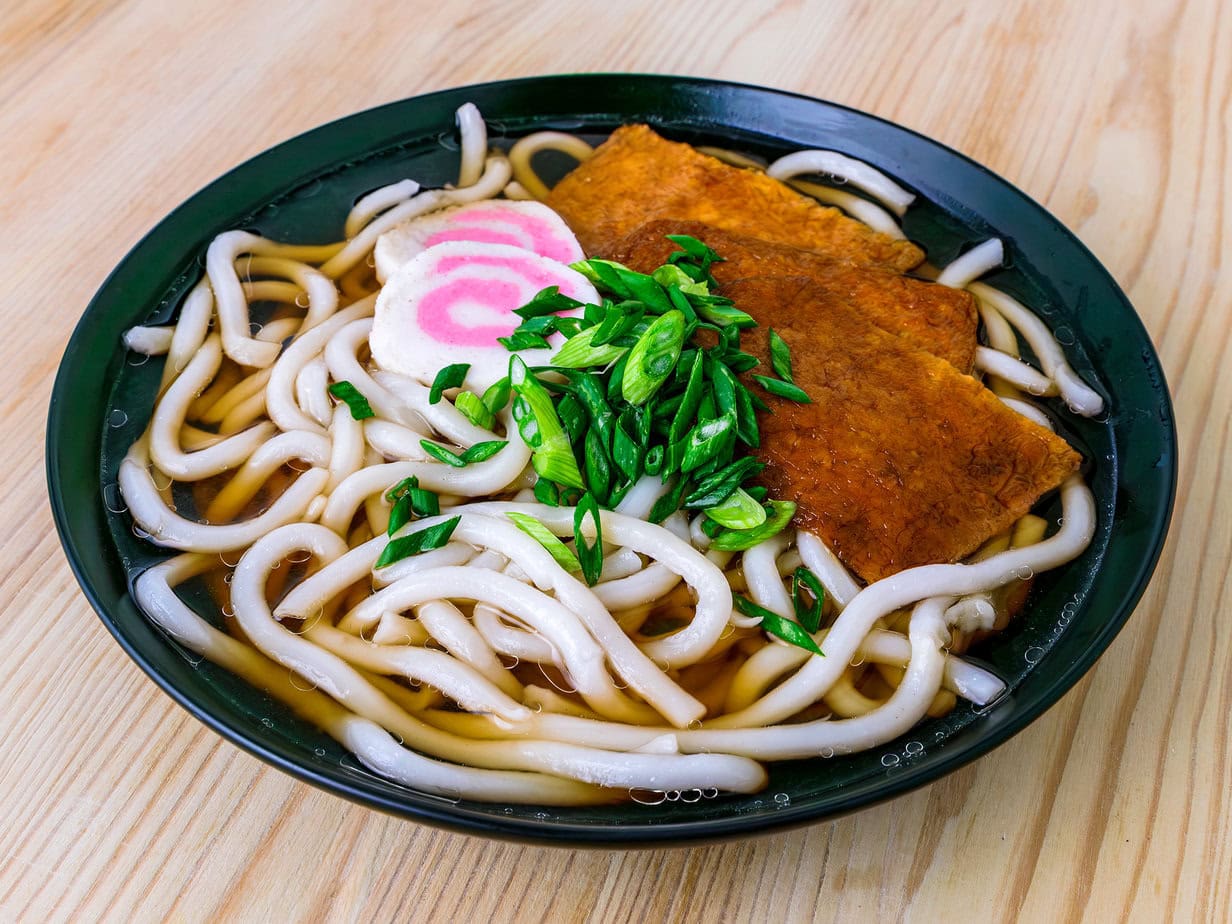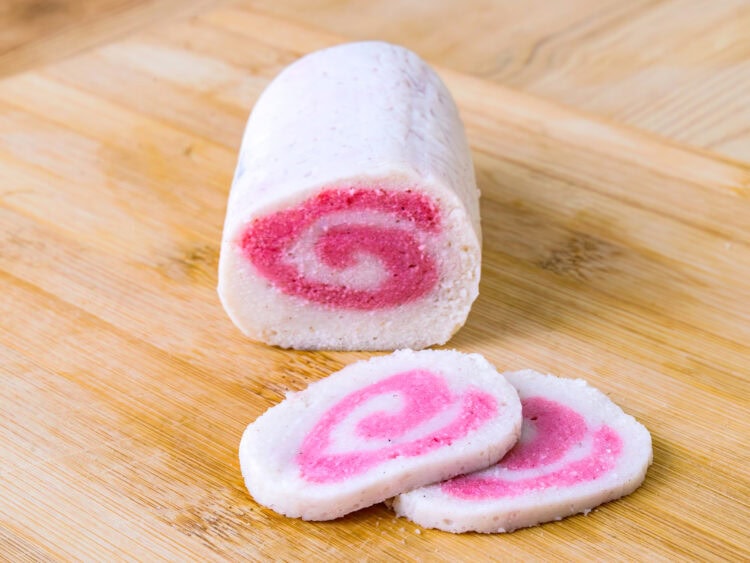Does this emoji, 🍥, ring a bell? You’ve surely seen it floating in ramen bowls or simply presented on a board, wondering what it is… Here’s kamaboko, a renowned specialty in Japanese cuisine!
What Is Kamaboko?
Kamaboko, almost similar to surimi, is actually a fish paste, presented as a half-cylinder on a wooden board. Usually, only white fish meat is used. Red meat lovers are thus warned. The Japanese eat it every year, especially on New Year’s Day, where it has become customary to consume it for good luck in the coming year.
They make them with this bright pink color for festive and aesthetic reasons. Sometimes, it’s green or brown. In some cases, you may have seen it with a spiral in its center (in some pop culture anime?). This is indeed kamaboko called “narutomaki”, named for this distinctive whirlpool-shaped element!
Where Does Kamaboko Come From?
Kamaboko is said to have first appeared in a book published during the Heian period (794 – 1185). The writing in question, titled Ruijuzatsuyosho
, highlights several life scenes, such as the emperor’s meals, ceremonial banquets, daily life… And it’s here that we could see the first known illustration of kamaboko, as it was served at that time.
During the Heian period, kamaboko was then minced fish meat wrapped around bamboo and grilled over charcoal embers. But you’re still wondering why it’s called “kamaboko”?
Resembling both the head of a distaff (from Japanese gama
) and a sword (hoko
), the fish meat was initially called Kabahoko
, which then evolved into kamaboko
later. The shape and presentation we know today likely dates back to the Muromachi period (1336 – 1573).
How Is Kamaboko Made?
The choice of fish is a crucial step in preparing kamaboko. As mentioned earlier in this article, white-fleshed fish are used. In Europe, we tend to use the meat of Alaska pollock or blue or white whiting, while in Japan, they use Itoyori (which is also found in surimi).
The white fish meat is cut into fillets, washed, and immersed in water before being ground. Sugar, salt, mirin, egg whites, Japanese sake, and fish sauce are added to this puree. Roughly speaking, the fish meat is mashed, kneaded, and fixed on a wooden board before cooking the whole thing. There are several cooking methods, but traditionally, kamaboko is steamed until a sticky, elastic, and quite compact puree is obtained. In the mouth, kamaboko is said to be softer than sausage but still firmer than pudding.
And hey, why is it served on wooden boards? These boards, commonly called “karaita”, are actually very practical as they absorb “excess moisture” from the kamaboko or, “conversely, when the kamaboko is too dry, they rehydrate it”. The wooden boards are therefore actually essential, which would not be the case with plastic or metal boards. They help maintain the ideal moisture level for kamaboko thanks to their porosity.
What Are the Different Varieties of Kamaboko?
Steamed, grilled, fried, poached… There are several varieties of kamaboko, which are actually distinguished by their cooking method for the most part. We already know steamed kamaboko, but there’s also “yakinuki kamaboko” which is roasted and includes several recipes, such as sasa-kamaboko, nanba-yaki, or shiroyaki kamaboko.
“Chikuwa-kamaboko” is fish meat cooked around a bamboo stick either over embers (“chikuwa yaki”) or steamed (“chikuwa shiro”).

There is also kamaboko boiled in hot water, including recipes for hanpen, suji, tsumire, and naruto-maki, which we’ve already mentioned. It can also be fried (satsuma-age, shiroten, jakoten, gobou-ten…).
Sometimes, decorative or reimagined kamaboko is made, imitating crab meat, shrimp, or scallops. The list of what exists is long, as you can imagine. Kamaboko is a true world of flavors to discover.
What does kamaboko bring to cooking?
Kamaboko is usually eaten sliced, accompanied by soy sauce and wasabi. It’s also quite regularly found in ramen (narutomaki), “chirashi sushi”, kitsune udon, soba, nabe, traditional bentos, chawanmushi, …

Where to find kamaboko?
It’s entirely possible to make your kamaboko at home, with very few ingredients actually. However, if you want to try the experience without necessarily getting your hands dirty, kamaboko can be found in most Asian grocery stores, specialty shops, or Japanese restaurants (inevitably!).
How to store kamaboko?
Ideally, kamaboko should be kept cool. Place it in the refrigerator in an airtight container and consume it before the expiration date indicated.

